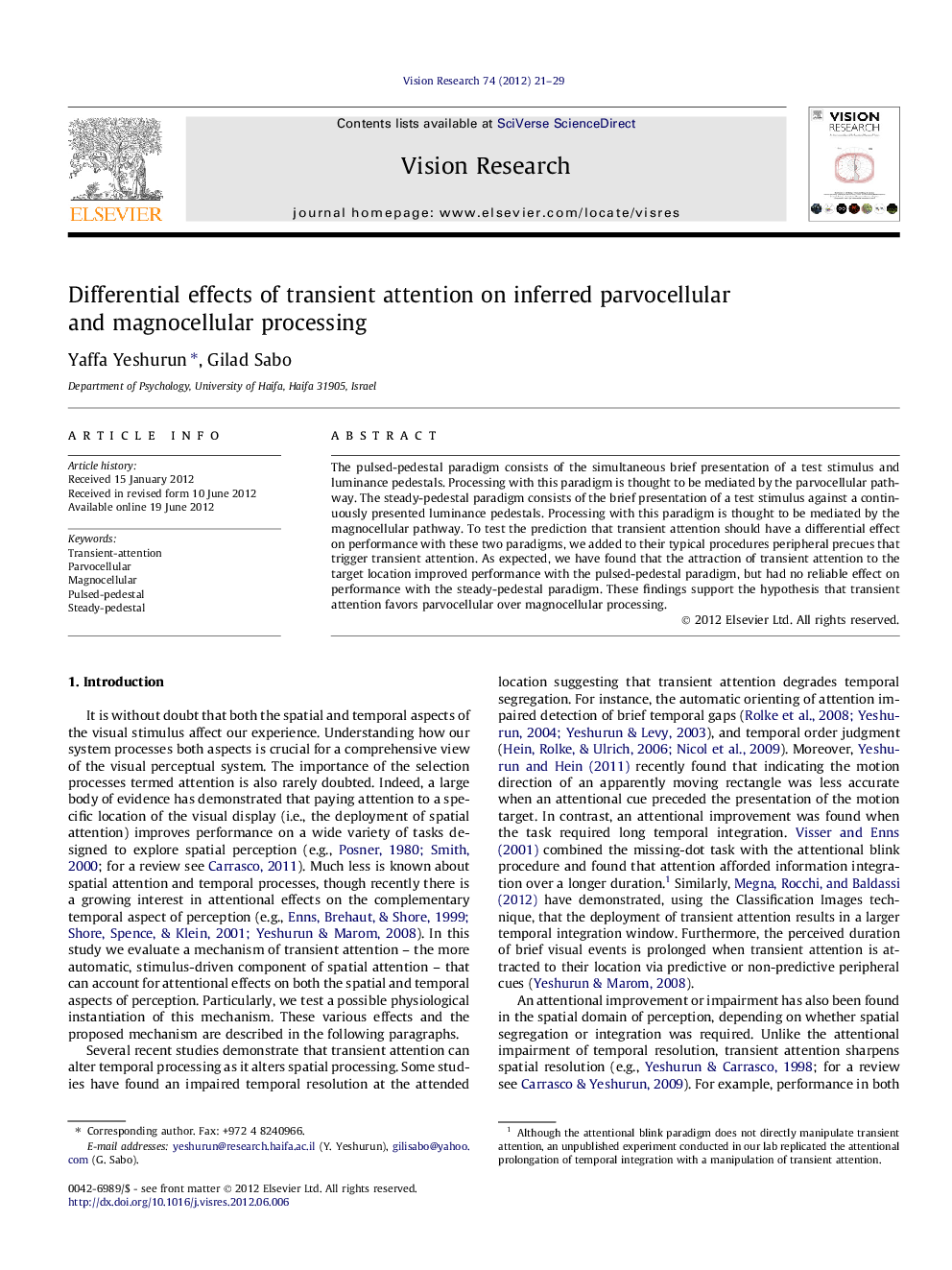| Article ID | Journal | Published Year | Pages | File Type |
|---|---|---|---|---|
| 6203654 | Vision Research | 2012 | 9 Pages |
The pulsed-pedestal paradigm consists of the simultaneous brief presentation of a test stimulus and luminance pedestals. Processing with this paradigm is thought to be mediated by the parvocellular pathway. The steady-pedestal paradigm consists of the brief presentation of a test stimulus against a continuously presented luminance pedestals. Processing with this paradigm is thought to be mediated by the magnocellular pathway. To test the prediction that transient attention should have a differential effect on performance with these two paradigms, we added to their typical procedures peripheral precues that trigger transient attention. As expected, we have found that the attraction of transient attention to the target location improved performance with the pulsed-pedestal paradigm, but had no reliable effect on performance with the steady-pedestal paradigm. These findings support the hypothesis that transient attention favors parvocellular over magnocellular processing.
⺠We combined peripheral precueing with the pulsed- and steady-pedestal paradigms. ⺠These paradigms bias processing towards parvocellular and magnocellular pathway, respectively. ⺠Precueing improved accuracy with the former but not the latter paradigm. ⺠This supports the hypothesis that transient attention favors parvocellular over magnocellular processing.
